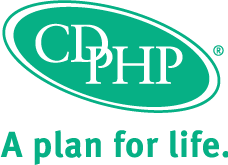Perimenopause, Menopause and Beyond
Currently there is an estimated 80 million women approaching or going through menopause. Menopause is the time in a woman’s life when she stops having menstrual periods. It is the first anniversary of a woman’s final menstrual period and occurs at an average age of 51. The years leading up to this point are called perimenopause. Although the average duration of perimenopause is 3-4 years, it can be shorter or span a decade.
Women are all too familiar with the symptoms of menopause including hot flashes, night sweats, insomnia, urogenital atrophy and sexual dysfunction. The risk for heart disease and osteoporosis also increases significantly with the onset of menopause.
Similarly, perimenopause has its own set of symptoms. Hot flashes, vaginal dryness, memory and concentration problems and menstrual irregularity can all occur during perimenopause. The symptoms associated with fibroids and endometriosis often become worse.
Hormone replacement therapy can be used to alleviate the symptoms of both perimenopause and menopause. During perimenopause, if a woman is still menstruating a low dose of oral contraceptive can often be used to regulate the menstrual periods and shrink fibroids and endometriosis. If a woman in perimenopause has not had a menstrual period for several months, or a woman is menopausal, hormone replacement therapy (HRT) is often used. HRT is usually a combination of estrogen and progesterone. In a woman who has had a hysterectomy, estrogen may be used. Sometimes, testosterone is added.
HRT is known to alleviate the short-term symptoms of menopause and decrease the risk of osteoporosis.
However, HRT is not for everyone. Benefits must be weighed against the risks. The decision to begin HRT depends on a woman’s medical history, symptoms, risk of osteoporosis, cardiovascular disease, breast cancer and a woman’s desire to take HRT.
Alternative therapies do exist for the symptoms of menopause/perimenopause and for the prevention of osteoporosis and heart disease. These include lifestyle and dietary changes, non-hormonal prescription drugs, vitamins, herbs and plants containing phytoestrogen. Soy protein, vitamin E and Black Cohash have been found to be effective in some women, however, many of the alternative therapies have not been extensively studied.
The options for caring for menopausal woman have greatly increased since estrogen replacement therapy (ERT) was first introduced in the 1960’s. Women are requesting more information on both hormonal alternative therapies and alternative therapies are being studied more carefully. The many options now available make caring for the menopausal woman more rewarding but also a greater challenge.









